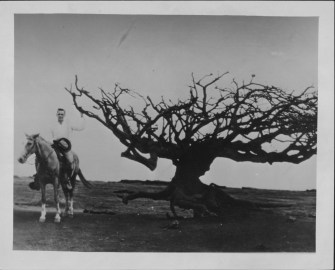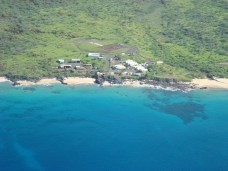This story was inspired by a luncheon talk former OHA Trustee, Peter Apo gave to the Hawaiʻi Economic Association I attended. Although he hinted at the “Big 5” reference, he purposefully referenced it differently.
Since the early/mid-1800s, until relatively recently, five major companies emerged and dominated the state’s economic framework. Their common trait: they were founded in agriculture – sugar and pineapple.
They became known as the Big 5: Amfac – starting as Hackfeld & Company (1849;) Alexander & Baldwin (1870;) Theo H. Davies (1845;) Castle & Cooke (1851) and C. Brewer (1826.)
The luncheon talk suggested a new group of five is making a difference in Hawaiʻi’s economic scene.
The new “Big 5:” Kamehameha Schools, Queen Emma Foundation/Queens Health Systems, Department of Hawaiian Home Lands, Office of Hawaiian Affairs and Queen Liliʻuokalani Trust.
Their common trait: they are entities formed from or for native Hawaiians.
Kamehameha Schools (KS)
The largest, Kamehameha Schools (KS) was founded under the terms of the 1884 will of Bernice Pauahi Bishop and is supported by the land assets she provided to support the schools.
The Princess noted in her will that a trust is “to erect and maintain in the Hawaiian Islands two schools, each for boarding and day scholars, one for boys and one for girls, to be known as, and called the Kamehameha Schools.”
She further stated, “I desire my trustees to provide first and chiefly a good education in the common English branches, and also instruction in morals and in such useful knowledge as may tend to make good and industrious men and women”.
Through the legacy of its founder, KS is endowed with 365,000-acres of land statewide, ninety-eight percent of which is in agriculture and conservation.
KS has about 1,000 agricultural tenants who farm a variety of crops including coffee, papaya, pineapple, macadamia nuts, lettuce, asparagus, sweet potatoes, taro, watercress, avocado, bananas, tomatoes, cattle, aquaculture, and more.
Kamehameha Schools has net assets of nearly $7-billion and annual operating revenue of $1.34-billion.
Queen Emma Foundation/Queens Health Systems
The Queen’s Hospital, now called The Queen’s Medical Center, was founded in 1859 by Queen Emma and King Kamehameha IV.
Queen Emma Land Company was established to support the Queen’s Medical Center and its affiliates and accomplishes this by managing and enhancing income-generating potential of the lands left to the Queen’s Hospital by Queen Emma in 1885 and additional properties owned by the Queen’s Health Systems.
Today, the Queen’s Health Systems is Hawaiʻi’s oldest health care-related family of companies, ranking 13th in size among Hawaiʻi’s corporations and employing approximately 3,700 employees with net revenues of roughly $516-million.
Department of Hawaiian Home Lands (DHHL)
Written in 1920 and passed in 1921 by the US Congress, the “Hawaiian Homes Commission Act” established a structure and framework for the establishment of the Department of Hawaiian Home Lands (DHHL) to enable native Hawaiians to return to their lands in order to fully support self-sufficiency for native Hawaiians and the self-determination of native Hawaiians.
The principal purposes of the Act: establishing a permanent land base for the benefit and use of native Hawaiians; placing native Hawaiians on the lands; preventing alienation of the fee title to the lands set aside so that these lands will always be held in trust for continued use by native Hawaiians in perpetuity …
… providing adequate amounts of water and supporting infrastructure, so that homestead lands will always be usable and accessible; and providing financial support and technical assistance to native Hawaiian beneficiaries.
When considering development and use of its lands, DHHL asserts its land use authority over Hawaiian Home Lands through its General Plan and Island Plans and is exempt from State and County land classification requirements.
DHHL has net assets of approximately $717-million and annual operating revenue of over $12-million, plus on-going capital improvement/development expenditures.
Office of Hawaiian Affairs (OHA)
Amendments to the State Constitution in 1978 established the Office of Hawaiian Affairs (OHA.) Those amendments also established a board of trustees for the Office of Hawaiian Affairs.
The Office of Hawaiian Affairs is a semi-autonomous state agency created “to address the needs of the aboriginal class of people of Hawaii.”
Duties of the Board of Trustees include, “hold title to all the real and personal property now or hereafter set aside or conveyed to it which shall be held in trust … (as well as) manage and administer the proceeds from the sale or other disposition of the lands, natural resources, minerals and income derived from whatever sources for native Hawaiians and Hawaiians”.
Recently, it was announced that the State and OHA settled disagreements on past ceded land payments. The State is giving about 25 acres of land to OHA, worth $200 million.
This is added to its existing inventory of Wao Kele O Puna (25,800+ acres,) Waimea Valley (1,800-acres) and other smaller properties.
The Office of Hawaiian Affairs has net assets of over $650-million and operating revenue of over $40-million.
The Liliʻuokalani Trust (QLT)
In 1909, Queen Liliʻuokalani executed a Deed of Trust that established the legal and financial foundation of an institution dedicated to the welfare of orphaned and destitute children of Hawaiʻi.
Her Deed of Trust states that “all the property of the Trust Estate, both principal and income … shall be used by the Trustees for the benefit of orphan and other destitute children in the Hawaiian Islands, the preference given to Hawaiian children of pure or part-aboriginal blood.”
The trust owns approximately 6,200-acres of Hawaiʻi real estate, the vast majority of which is located on the Island of Hawaiʻi. 92% is agriculture/conservation land, with the remaining land zoned for residential, commercial and industrial use.
The trust owns approximately 16-acres of Waikīkī real estate and another 8-acres of commercial and residential real estate on other parts of Oʻahu. It has operating revenues of approximately $40-million.
In addition to these land holdings, the Legislature created the Kahoʻolawe Island Reserve Commission (KIRC) to manage the Kahoʻolawe Island Reserve while it is held in trust for a future Native Hawaiian sovereign entity.
While most of the prior “Big 5” have slowly faded away and no longer influence Hawaiʻi’s economy as in the past, these other five have a growing presence and influence in Hawaiʻi’s future.
























